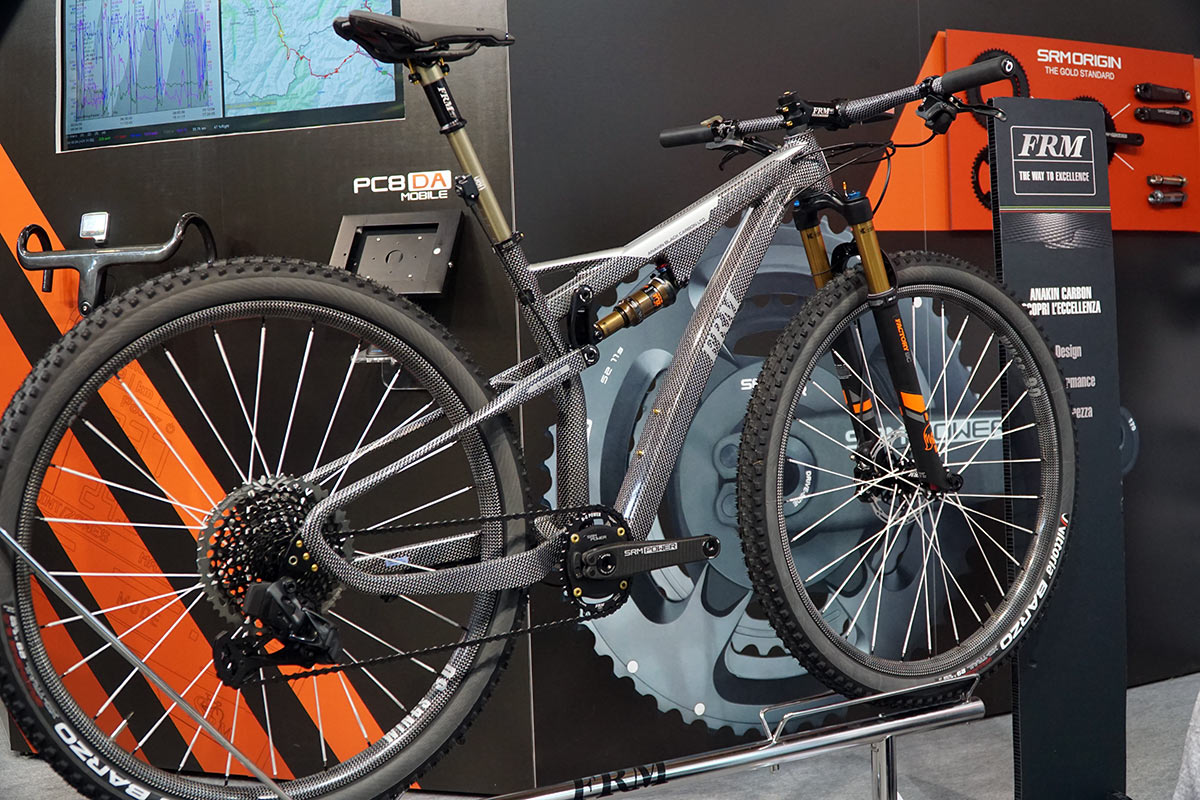FRM is known for their lightweight parts, and now they’ve got a $4,900 frame made with Dyneema and carbon, and only a light clear coat. The result is this striking full suspension bike, complete with Dyneema-enhanced cockpit parts and other tricks to deliver a bike that’s under 10kg (22lb) complete. Claimed frame weight is just 2kg (4.4lb) with shock.
Why Dyneema? It’s strong, but it also removes vibrations.
And they’ve used it everywhere on this bike, from cockpit to rims to spokes:
Wheels are 1,300g with a 30mm internal width rim. The Dyneema spokes are flexible and ultralight, but don’t stretch, so they work to prevent flex while still allowing the wheel to absorb impacts.
Another big weight saver is their 60mm travel dropper post, which comes in just under 300g. It puts the moving parts on the outside of the main tube, giving it a larger overall diameter to resist flex and create a stronger part…that’s also really light. Retail is €619.








